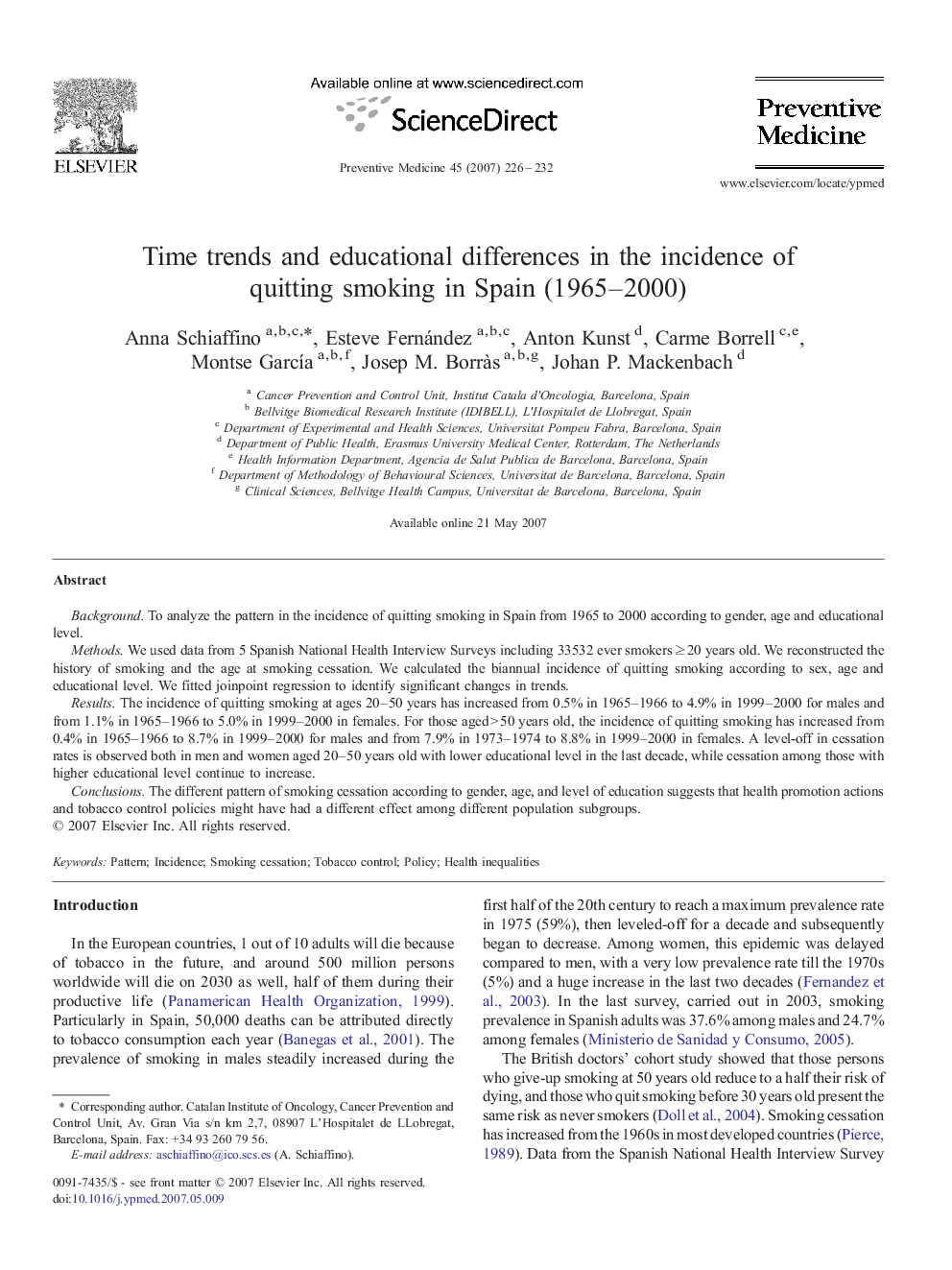| Article ID | Journal | Published Year | Pages | File Type |
|---|---|---|---|---|
| 3101966 | Preventive Medicine | 2007 | 7 Pages |
BackgroundTo analyze the pattern in the incidence of quitting smoking in Spain from 1965 to 2000 according to gender, age and educational level.MethodsWe used data from 5 Spanish National Health Interview Surveys including 33532 ever smokers ≥ 20 years old. We reconstructed the history of smoking and the age at smoking cessation. We calculated the biannual incidence of quitting smoking according to sex, age and educational level. We fitted joinpoint regression to identify significant changes in trends.ResultsThe incidence of quitting smoking at ages 20–50 years has increased from 0.5% in 1965–1966 to 4.9% in 1999–2000 for males and from 1.1% in 1965–1966 to 5.0% in 1999–2000 in females. For those aged > 50 years old, the incidence of quitting smoking has increased from 0.4% in 1965–1966 to 8.7% in 1999–2000 for males and from 7.9% in 1973–1974 to 8.8% in 1999–2000 in females. A level-off in cessation rates is observed both in men and women aged 20–50 years old with lower educational level in the last decade, while cessation among those with higher educational level continue to increase.ConclusionsThe different pattern of smoking cessation according to gender, age, and level of education suggests that health promotion actions and tobacco control policies might have had a different effect among different population subgroups.
